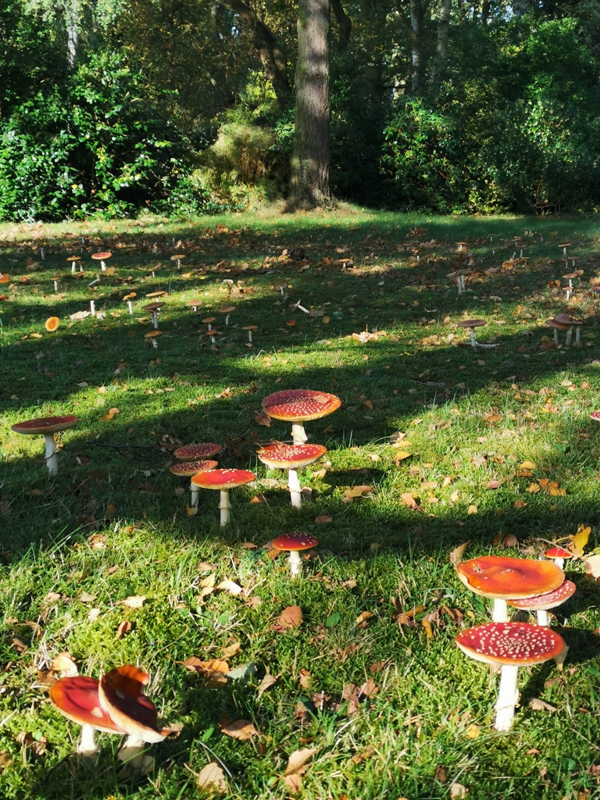Hemingford Abbots, October 2020
 |
 |
Photographs by Bridget Flanagan
Perhaps there are fairies at the bottom of my garden? If they do come to visit there are lots of their favourite red and white toadstools to sit on. The ground beneath the silver birch and pine trees has hundreds of Amanita muscari, commonly known as Fly Agaric. Fly Agarics thrive on the light sandy, slightly acidic soils on the gravel ridges along parts of the Great Ouse Valley. They are mycorrhizal fungi and have a symbiotic relationship with the birch and pine trees – they exist by taking sugars from the trees ‘in exchange’ for moisture and nutrients gathered from the soil. Their fungal strands (mycorrhizae) greatly to the root system.
But however enchanting these toadstools may look, they are poisonous and will cause vomiting and nausea. Fly Agarics were traditionally used as an insecticide – which is how the fungusl got its common name; the cap, which contains ibotenic acid, was crumbled into saucers of milk to intoxicate and kill flies.
The Amanita muscari toadstool contains another toxin - muscimol - and together with the ibotenic acid, this gives the fungus hallucinogenic and psychoactive properties when ingested. In ancient Iran and India it was used in a sacred, ritual drink called soma. The druids and shamen of northern Europe used it to induce euphoria, to allow them to commune with the spirit world. There are theories that the Siberian use of Fly Agaric may be part of the development of the Santa Claus legend. Reindeer grazed on the fungi, and, observing their strange behaviour, the herders would kill and eat the intoxicated animals, trying to experience the strange effects for themselves. At the winter solstice shamen distributed gifts of dried Fly Agaric, but if there was deep snow they may have entered the yurts from above by the central smoke hole. Then, after completing the due ceremonies, they would have departed the way they entered. So, flying red-nosed reindeer, winter gifts brought via the chimney, and the red-and-white colouring of a mystery donor who lives in the Arctic, might all be part of a very good story!
Trustee Bridget Flanagan

